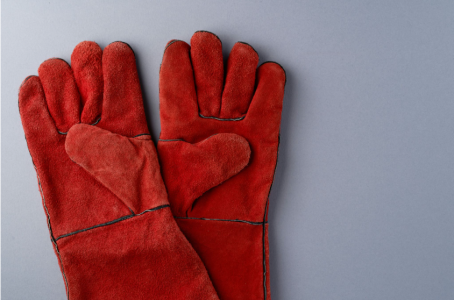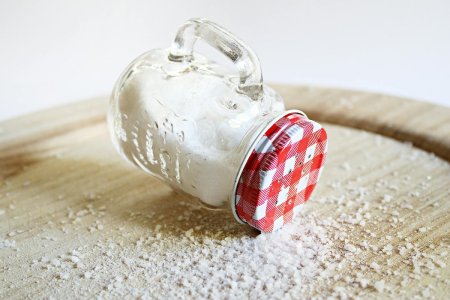This clothing item is filthier than you think—and you’re probably wearing it right now
By
Aubrey Razon
- Replies 0
Germs aren’t just lurking in public places—they could be closer than you think. One everyday item may be a hidden bacteria hotspot. Could you be wearing it right now?
A recent study by Initial Washroom Hygiene has revealed a startling truth: the gloves we wear to keep our hands warm and dry could be harboring four times more germs than a toilet seat.
That's right, the very items we rely on for comfort and protection through the colder months might be putting us at risk of unpleasant illnesses.
The study involved swabbing the inside and outside of 50 pairs of gloves, including varieties made of wool, leather, suede, and even cycling gloves.
The results were eye-opening, with over half of the gloves tested showing alarmingly high levels of harmful bacteria.
Cycling gloves were the worst offenders, followed by woolen and suede gloves.
To put things into perspective, a toilet seat typically contains about 220 units of biological matter.
In contrast, some gloves in the study exceeded 4,000 units. That's not just a small difference; it's a veritable petri dish of germs you're slipping your hands into!
The researchers used an ATP bioluminescence test to detect adenosine triphosphate, a molecule that indicates the presence of living cells, including bacteria, viruses, and fungi.
This test shines a light (quite literally) on the cleanliness of a surface by measuring how much light is produced through a chemical reaction in the sample.
It's important to remember that gloves come into contact with numerous potential sources of contamination throughout the day.
From gripping poles on public transportation to handling our smartphones, the opportunities for germs to hitch a ride are endless.
And if you put on your gloves with unwashed hands, you're also contaminating the inside.

The findings of this study are not just a fun fact to share at your next dinner party; they're a wake-up call.
Experts are urging everyone to wash their hands before and after wearing gloves to minimize the risk of infection.
Regularly washing your gloves is also recommended, as it can significantly reduce the buildup of germs.
Hand hygiene is crucial, as 80% of infections are transmitted through our hands.
Washing your hands remains one of the most effective ways to prevent the spread of viruses and bacteria.
It's worth noting that gloves, particularly those made of wool, may not be as protective as we think.
A study in the Journal of Food Protection found that wool gloves only slightly reduced the spread of E.coli compared to bare hands when handling raw meat.
And in the context of the Covid-19 pandemic, experts have warned that gloves can give a false sense of security, as the virus can survive on gloves just as it can on hands.
So, what can you do to ensure your gloves aren't a germ haven?
1. Wash your hands before putting on gloves and after taking them off.
2. Clean your gloves regularly—follow the care instructions for the best results.
3. Be mindful of what you touch while wearing gloves and avoid unnecessary contact with high-touch surfaces.
4. Consider using hand sanitizer when you can't wash your hands immediately after removing gloves.
Remember, staying informed and proactive about hygiene is key to enjoying the golden years in good health. Let's keep those hands clean and those gloves cleaner!
 Have you ever thought about how clean your gloves are? Do you have any tips for keeping them germ-free? Share your thoughts and tips with us in the comments below.
Have you ever thought about how clean your gloves are? Do you have any tips for keeping them germ-free? Share your thoughts and tips with us in the comments below.
A recent study by Initial Washroom Hygiene has revealed a startling truth: the gloves we wear to keep our hands warm and dry could be harboring four times more germs than a toilet seat.
That's right, the very items we rely on for comfort and protection through the colder months might be putting us at risk of unpleasant illnesses.
The study involved swabbing the inside and outside of 50 pairs of gloves, including varieties made of wool, leather, suede, and even cycling gloves.
The results were eye-opening, with over half of the gloves tested showing alarmingly high levels of harmful bacteria.
Cycling gloves were the worst offenders, followed by woolen and suede gloves.
To put things into perspective, a toilet seat typically contains about 220 units of biological matter.
In contrast, some gloves in the study exceeded 4,000 units. That's not just a small difference; it's a veritable petri dish of germs you're slipping your hands into!
The researchers used an ATP bioluminescence test to detect adenosine triphosphate, a molecule that indicates the presence of living cells, including bacteria, viruses, and fungi.
This test shines a light (quite literally) on the cleanliness of a surface by measuring how much light is produced through a chemical reaction in the sample.
It's important to remember that gloves come into contact with numerous potential sources of contamination throughout the day.
From gripping poles on public transportation to handling our smartphones, the opportunities for germs to hitch a ride are endless.
And if you put on your gloves with unwashed hands, you're also contaminating the inside.

Experts recommend washing hands before and after wearing gloves. Image source: Sarune Sedereviciute/Unsplash.
The findings of this study are not just a fun fact to share at your next dinner party; they're a wake-up call.
Experts are urging everyone to wash their hands before and after wearing gloves to minimize the risk of infection.
Regularly washing your gloves is also recommended, as it can significantly reduce the buildup of germs.
Hand hygiene is crucial, as 80% of infections are transmitted through our hands.
Washing your hands remains one of the most effective ways to prevent the spread of viruses and bacteria.
It's worth noting that gloves, particularly those made of wool, may not be as protective as we think.
A study in the Journal of Food Protection found that wool gloves only slightly reduced the spread of E.coli compared to bare hands when handling raw meat.
And in the context of the Covid-19 pandemic, experts have warned that gloves can give a false sense of security, as the virus can survive on gloves just as it can on hands.
So, what can you do to ensure your gloves aren't a germ haven?
1. Wash your hands before putting on gloves and after taking them off.
2. Clean your gloves regularly—follow the care instructions for the best results.
3. Be mindful of what you touch while wearing gloves and avoid unnecessary contact with high-touch surfaces.
4. Consider using hand sanitizer when you can't wash your hands immediately after removing gloves.
Remember, staying informed and proactive about hygiene is key to enjoying the golden years in good health. Let's keep those hands clean and those gloves cleaner!
Key Takeaways
- Gloves, particularly cycling gloves, can harbor four times more germs than a toilet seat, posing a risk of spreading illnesses.
- Research conducted on 50 pairs of various types of gloves found high levels of harmful bacteria, with the majority exceeding normal contamination ranges.
- The study by Initial Washroom Hygiene used ATP bioluminescence tests to measure cleanliness by detecting living cells' biological matter.
- Experts recommend washing hands before and after wearing gloves and regular cleaning of gloves to prevent infections and reduce germ transmission.






